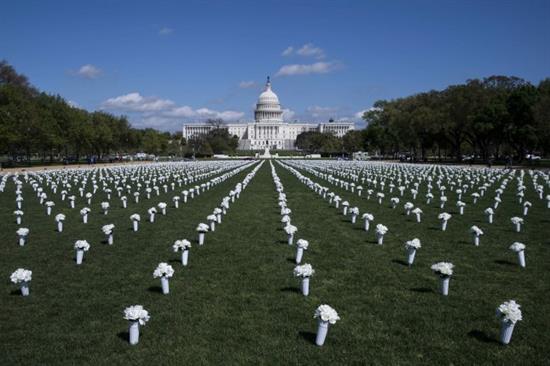Blog Posts
Pingree: Finally, Republicans Put Aside Partisanship to Act on Gun ViolenceThe bipartisan, bicameral Safer Communities Act includes many provisions first passed by the House earlier this month, including funding for red flag laws, enhanced background checks for buyers under 21, increased mental health resources, and more life-saving provisions
Washington,
June 24, 2022
Tags:
Community Safety
Maine First District Congresswoman Chellie Pingree today voted for urgently-needed gun violence prevention legislation, S. 2938, the Safer Communities Act. This commonsense bill includes many provisions first passed by Pingree and the House earlier this month, including funding for red flag laws, enhanced background checks for buyers under 21, increased mental health resources, and more life-saving provisions. “For three decades while Republicans staunchly obstructed commonsense gun violence prevention bills, America endured tragedy after tragedy. From schools and churches to grocery stores and concerts, weapons of war have senselessly been turned on our children and neighbors,” said Pingree. “In the wake of more horrific mass shootings in Uvalde and Buffalo, Republicans have finally put aside partisanship to join Democrats in taking this first step to deliver what our constituents have long wanted. With today’s passage of the Bipartisan Safer Communities Act, Congress has taken a long-overdue action to stop America’s epidemic of gun violence.” Since her election to the U.S. House in 2008, Pingree has been an outspoken proponent of gun violence prevention measures, which have been blocked by Congressional Republicans despite hundreds of mass shootings. In 2016, in the wake of the Pulse nightclub shooting, Pingree joined her Democratic House colleagues in staging an all-night sit-in protest on the House floor to demand a gun violence prevention bill be brought to the floor. Photos and videos from the sit-in are available for download here. Republicans blocked any attempts for debate or discussion on gun violence until this week. The Safer Communities Act includes: Support for State Crisis Intervention Orders: Creates $750 million for states to create and administer laws that will ensure deadly weapons are kept out of the hands of individuals determined by a court to be a significant danger to themselves or others, and for extreme risk protection orders that have sufficient due process. Protections for Victims of Domestic Violence by Closing the Boyfriend Loophole: Adds convicted domestic violence abusers in dating relationships to the National Instant Criminal Background Check System (NICS). Banning Gun Trafficking & Cracking Down on Straw Purchases: Cracks down on criminals who illegally evade licensing requirements and clarifies which sellers need to register, conduct background checks, and keep appropriate records, and creates federal straw purchasing and trafficking criminal offenses for the first time, allowing prosecutors to target dangerous illegal gunrunners. Enhanced Background Checks for People Under 21: Requires an investigative period to review juvenile and mental health records, including checks with state databases and local law enforcement, for buyers under 21 years of age, creating an enhanced, longer background check of up to ten days. Anti-Violence Community Initiatives: Provides $250 million in funding for community-based violence prevention initiatives. Investments in Children & Family Mental Health Services: Supports the national expansion of community behavioral health center model; improves access to mental health services for children, youth, and families through the Medicaid program and CHIP; increases access to mental health services for youth and families in crisis via telehealth; and provides major investments at the Department of Health and Human Services to programs that expand provider training in mental health, support suicide prevention, crisis and trauma intervention and recovery. Investments in Safe Schools: Invests in programs to expand mental health and supportive services in schools, including: early identification and intervention programs, school-based mental health and wrap-around services, improvements to school-wide learning conditions, and school safety. ###
|

